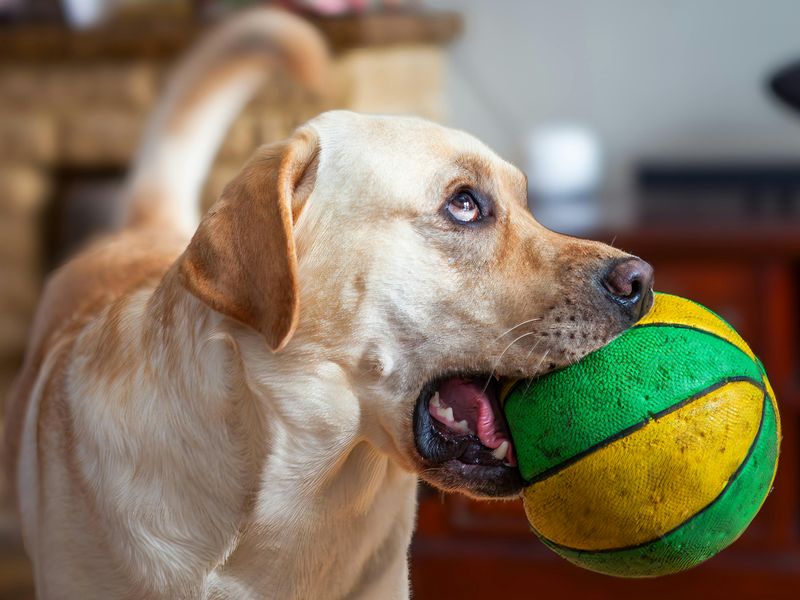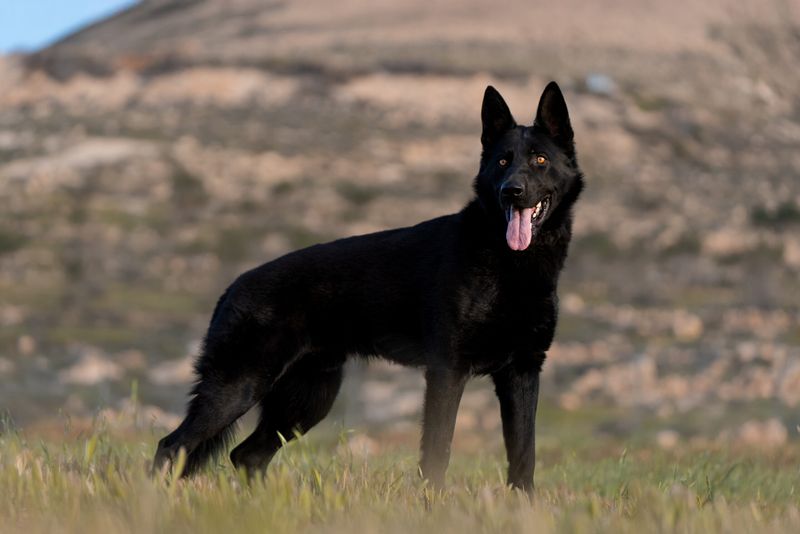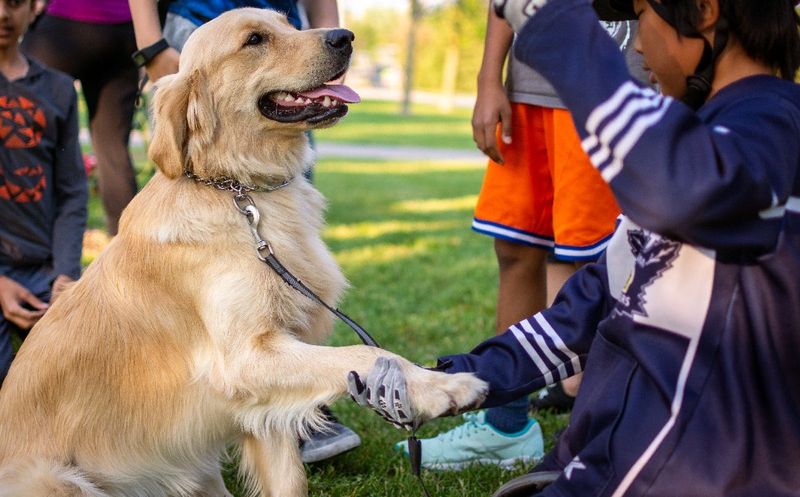Dogs don’t just say hello—they tell a story with every wag, bounce, and toy they proudly present. When your pup greets you with their favorite squeaker, there’s a deeper reason behind the ritual. Understanding these motives strengthens your bond and makes greetings more meaningful. Read on to discover the psychology and heart behind this adorable habit—and how to respond in ways your dog will love.
Sharing Social Bond
When your dog greets you with a toy, they’re offering a piece of their world to strengthen your bond. Dogs are social creatures, and sharing prized possessions signals trust and inclusion. This gesture mirrors cooperative behavior seen in canine packs, where valued items help reinforce relationships. Your dog is saying, “You’re part of my team.” Accepting the toy, praising them, or engaging in brief play validates that connection. Over time, this ritual becomes a comforting routine that eases transitions when you arrive home. It’s affection through action, wrapped in squeaky fabric.
Initiating Playtime
Most often, bringing a toy is a clear invitation: “Let’s play!” Dogs thrive on interactive fun, and the moment you return is prime time to release pent-up energy. A favorite toy becomes the perfect cue for tug, fetch, or chase, all of which stimulate body and mind. This greeting is your dog’s way of setting the agenda in the kindest way possible. Short play sessions can reduce stress, curb boredom, and prevent unwanted behaviors later. If you’re busy, acknowledge the invite and schedule play soon. Consistency teaches your dog you’ll meet that social need.
Offering Peace Token
Some dogs use toys as a peace offering to reduce tension during high-energy reunions. Presenting an object occupies their mouth and redirects arousal, making the greeting calmer. This self-soothing strategy is especially common in sensitive or excitable dogs. A toy can function like a social buffer, conveying friendly intent: “I come in peace.” Reinforce this with calm praise and gentle petting. Avoid overly hyped greetings that spike adrenaline. With time, the toy ritual helps prevent jumping, mouthing, or barking. It’s a smart, canine-crafted solution to manage big emotions in small moments.
Resource Sharing Practice
Bringing a prized toy can reflect healthy resource sharing, not guarding. Your dog may be practicing a cooperative exchange: offering the item to invite interaction, then receiving it back through play. This builds trust and teaches that humans near valued items are safe. If your dog willingly releases the toy and remains relaxed, you’re seeing great social skills. Encourage it with praise and trades, like swapping for another toy. Avoid forcefully taking objects, which can create anxiety. Over time, fair exchanges reduce possessiveness and make greetings smoother and happier.
Mouth Occupation Habit
Some dogs simply need something in their mouth during exciting moments. Carrying a toy satisfies this oral fixation safely, preventing nipping or grabbing clothing. Breeds with strong retrieving or mouthing tendencies especially benefit from this built-in coping mechanism. If your dog defaults to a toy at the door, they’re self-managing excitement in a constructive way. Keep a basket of safe, durable toys near entry points to support the habit. Praise calm carries and gentle releases. Over time, this ritual becomes a predictable, polite greeting that channels energy without chaos.
Displaying Special Prize
Dogs love to show off. Presenting a favorite toy is canine bragging—“Look what I’ve got!” This display behavior is reinforced when you respond with smiles, compliments, or play. The toy becomes a trophy in a mini parade, turning your arrival into a celebration. New or squeaky toys amplify the effect because novelty boosts excitement. Lean into the moment: praise their find, ask them to “show,” and admire it. Short, cheerful interactions keep the ritual fun without overstimulation. It’s harmless pride that strengthens your shared joy and communication with your dog.
Seeking Positive Attention
Bringing a toy reliably gets your attention, which dogs crave after time apart. If past greetings with toys led to praise or play, your pup learned that this behavior works. It’s operant conditioning at its cutest. Reward the calm approach and brief eye contact before engaging, shaping polite manners. If you can’t play immediately, use a marker like “later,” then follow through later. This maintains the attention link without encouraging frantic demands. Consistent responses teach your dog that connection is coming, reinforcing secure, happy reunions.
Built-In Retriever Instinct
Many breeds are wired to carry objects; it’s in their genetics. Retrievers, spaniels, and some herding breeds naturally enjoy holding and transporting items. Greeting with a toy satisfies that instinct in a socially acceptable way. It also offers sensory feedback through texture and squeak, which feels rewarding. Provide varied toys—soft, rubber, rope—to meet these innate preferences. Structured fetch or carry cues like “hold” can refine the ritual. Honoring instinct doesn’t create bad habits; it channels nature into joyful cooperation and deepens your understanding of your dog’s heritage.
Reducing Separation Stress
For some dogs, the toy is comfort. Holding a familiar object can ease separation-related arousal and smooth your return. It offers scent continuity and a task: carry, present, and maybe play. This predictable sequence anchors big feelings. Pair your arrival with calm rituals—slow petting, deep breaths, and quiet praise. Avoid explosive excitement that spikes anxiety. If stress is significant, integrate enrichment and gradual departures to build resilience. The toy then becomes part of a broader toolkit supporting emotional balance, not just a cute quirk.
Training History Cue
Sometimes the toy greeting stems from learned cues. Perhaps you once asked for “get your toy!” to prevent jumping, and it stuck. Dogs remember routines that earn rewards, so they repeat them. If you like the behavior, reinforce it with brief play or a treat after a sit and release. If not, swap to a new cue like “place” on a mat. Either way, clarity matters: consistent words and timing help your dog predict outcomes. Training shapes greetings into safe, polite, and enjoyable moments for everyone.
Gift-Giving Myth Debunked
It’s tempting to think your dog is gifting you their treasure altruistically. While it looks like human-style generosity, it’s usually social play, attention-seeking, or stress management. That doesn’t make it less meaningful—just more authentically canine. Understanding real motivations helps you respond appropriately and keep the ritual positive. Accept the toy, engage briefly, and celebrate the connection without expecting a “present.” Your dog isn’t wrapping gifts; they’re communicating. When you read the message, your relationship flourishes in ways that feel natural to both species.











